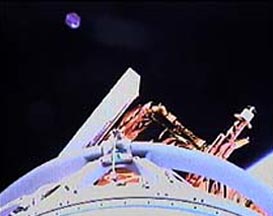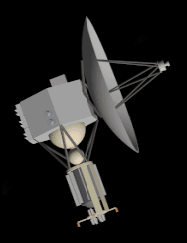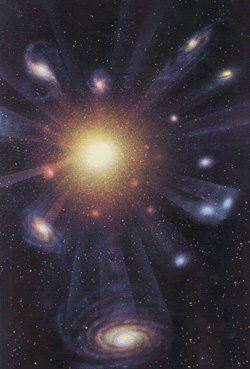Click on image for full size
Courtesy of NASA
Related links:
NASA Launches Satellite to Study Big Bang
News story originally written on June 28, 1999
NASA launched its newest satellite on June 24, 1999 from Cape Canaveral.The Far Ultraviolet Spectroscopic Explorer (FUSE) began its mission aboard the new Delta II rocket, which helped get the satellite to the 480 mile high orbit. FUSE will be scientists' latest tool for uncovering the darkest secrets of the Big Bang.
FUSE will use a a special instrument called a spectrograph. This will allow scientists to look at light received from distant objects in component colors. By studying these basic colors, scientists can then discover the elemental makeup of the universe right after it began. During the first three years of its mission, FUSE will work mostly on its own, gathering data from various stars and galaxies on the outskirts of the universe.
"What the early conditions of the Big Bang were, how we got here, how it got here -- FUSE is absolutely at the core of answering those questions," said Harley Thronson, director of NASA's Origins program, under which FUSE falls.
Other topics that will be studied using FUSE include star formation and our own galaxy, the Milky Way. The satellite and mission were developed by Johns Hopkins University. Developers say FUSE should be ready to collect data in August.










